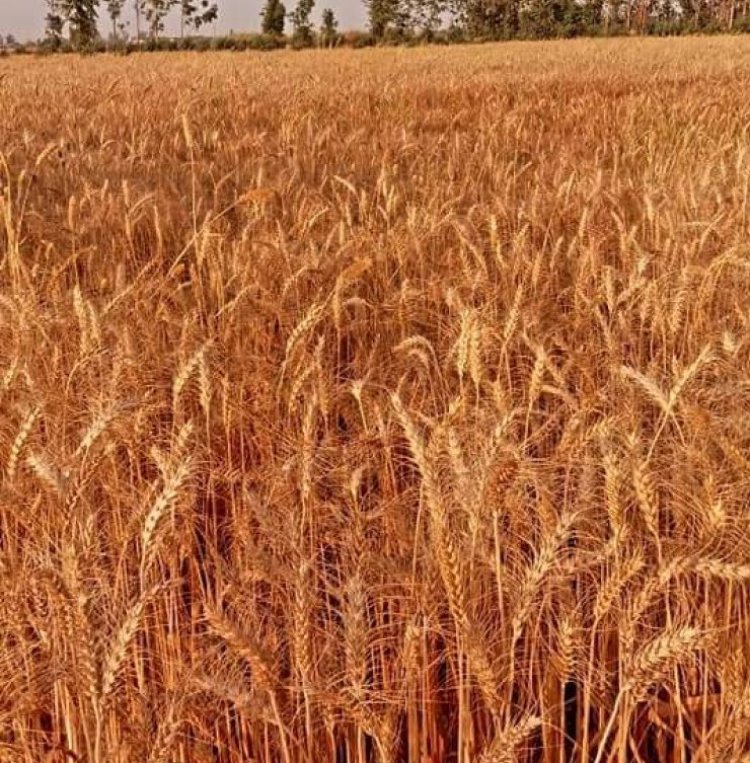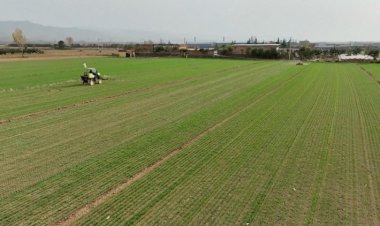Rising temperatures cast shadow on wheat output, but IARI says don't worry
Research agency Crisil warns that if the prevailing high temperatures continue through March, then the rabi wheat crop will be impacted and yields will at best be on a par, or even lesser marginally, than last year's low. However, government-research body IARI has said, the situation is not alarming right now.

Research agency Crisil warns that if the prevailing high temperatures continue through March, then the rabi wheat crop will be impacted and yields will at best be on a par, or even lesser marginally, than last year's low. However, government-research body IARI has said, the situation is not alarming right now.
Crisil said in Uttar Pradesh, which accounts for around 30 per cent of wheat production, eastern part is expected to have relatively good yields due to timely sowing after the kharif paddy harvest. But western UP may see a marginal decline due to late sowing if the high temperatures persist in March.
In Punjab and Haryana, which together contribute 25 per cent of annual wheat production, late-sown wheat is in the flowering stage, while the early-sown lot is in the milking stage and high temperatures are detrimental to grain formation in both these stages.
Related Story: Climate-smart wheat variety developed by ICAR will beat the heat
In Madhya Pradesh, which produces 20 per cent of annual wheat, the late-sown wheat is at the milking stage now. But Bihar, which contributes 5 per cent of production, has seen early sowing and the crop there is at the grain formation/maturation stage, which could mean relatively less impact.
Though such abiotic factors are difficult to be managed very effectively, the Crisil report says farmers in Punjab, Haryana and western UP are already spraying crop nutrients like bio-stimulants and specialty fertilisers which should help them cope with the heat wave to some extent.
Wheat crop has reached the maximum vegetative stage in Madhya Pradesh, parts of Punjab and Haryana, according to the Mahalanobis National Crop Forecast Centre (MNCFC). Whereas in eastern Uttar Pradesh and Bihar, wheat crop is yet to reach the maximum vegetative phase due to delay in sowing.
The life cycle of a wheat plant is divided into three main development phases, namely the vegetative phase, in which leafs and tillers are developed; the reproductive phase, and the grain fill stage. The wheat crop normally enters the grain fill stage in March and any unusual rise in temperature could cause yield damage.
Even though wheat prices have been trending down for the past 20 days, if these high temperatures persist for the next 20 days, there can be price pressures.
Amid concerns over the impact of rising temperature on wheat yields, Indian Agricultural Research Institute (IARI) Director AK Singh said the situation is not alarming right now. It, however, advised farmers to be ready to take contingent measures like light irrigation in case the temperature soars beyond 35-degree Celsius in mid-March.
Wheat, a major rabi (winter) crop, would be ready for harvest next month. As the Met office has forecast rising temperatures in parts of the country, farmers are worried about a repeat of last year when the heatwave hit the crop yields.
Singh said, "The IMD (India Meteorological Department) has forecast that temperature would remain 2-degree Celsius above normal but below 35-degree Celsius till the first fortnight of March. A below 35-degree Celsius temperature is not a concern for the wheat crop."
IARI's agriculture and weather scientists explained heat is a major concern during the crop maturity stage in mid-March. The impact on the crop is likely only if temperatures remain above 35 degrees Celsius continuously for four days.
Suppose the temperature rises by 2 degrees Celsius above normal and then comes down the next day, then there is not much impact because the wheat plant has the ability to cope with it.
If the temperature stays in the range of 31-32 degrees Celsius in mid-March, farmers can continue with their routine farm operations. The only intervention farmers can do, when the temperature crosses 35 degrees Celsius somewhere in mid-March, is application of irrigation two days in advance as a precaution.
Farmers should keep watch and be ready with contingent measures like applying light irrigation and mid-noon sprinklers. The next weather update will come on February 24, which could give a clear picture of the next month.
Amid minimum temperatures hovering above normal in Punjab and Haryana, the Karnal-based ICAR-Indian Institute of Wheat and Barley Research (IIWBR) has asked wheat growers to apply light irrigation to the winter crop as per requirement.
In case of strong windy weather, irrigation should be stopped to avoid lodging that may result in yield loss. Farmers who have the facility of sprinkler irrigation can irrigate their field with sprinkler for 30 minutes in the afternoon in case of rise in temperature. Farmers having drip irrigation facilities need to ensure proper moisture in the crop to avoid stress, said the IIWBR advisory.
It said that to avoid the damage caused by terminal heat in case of sudden rise in temperature, two sprays of potassium chloride 0.2 per cent at jointing and heading stage may reduce the losses. Farmers were further advised to regularly monitor their wheat crop for yellow rust disease. In case of yellow rust disease, consult the agricultural expert at the nearest Krishi Vigyan Kendra, research institute or state agriculture department staff.
Farmers' leader Ajay Vir Jakhar had on February 21 tweeted: "This week, average daytime temperature 5.5 degrees C above normal and 3.3 degree C at night-time. Farmers fear a repeat of last year's crop loss which actually got magnified due to lack of availability of canal water & cleaning canals remains a worry."
It may be noted that the government has set up a committee to assess the possible impact of rising temperatures on wheat crops and issue necessary advisories to the farmers.
India is set to harvest a record 112.18 million tonnes of wheat in the 2022-23 crop year (Jul-Jun) as per the second estimate released by the agriculture ministry. The country's wheat production fell to 106.84 million tonnes in the 2021-22 crop year from 109.59 million tonnes in the previous year due to heat waves in a few growing states.
The Centre had banned wheat exports in May last year to control rising prices, after a slight fall in domestic production and sharp decline in the FCI's procurement for the central pool.



 Join the RuralVoice whatsapp group
Join the RuralVoice whatsapp group






































